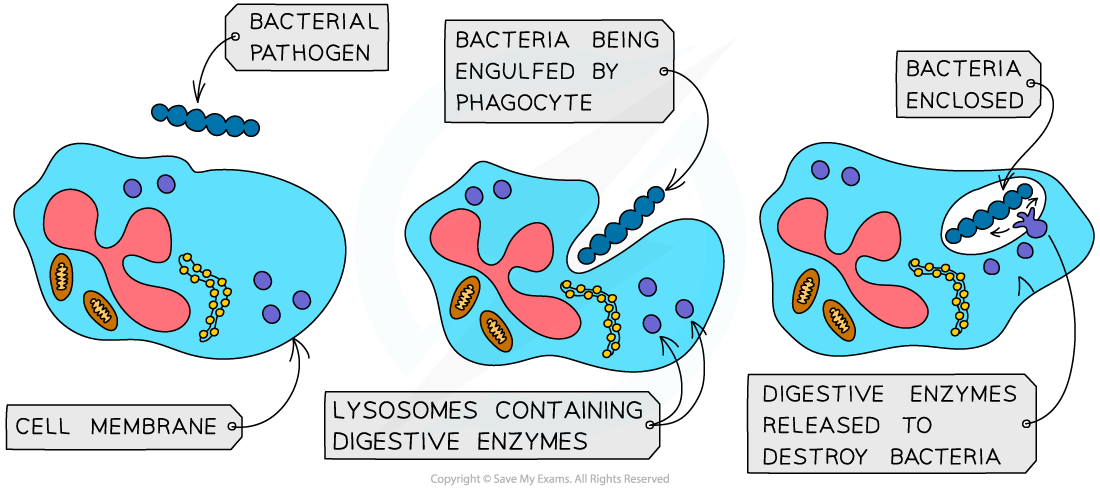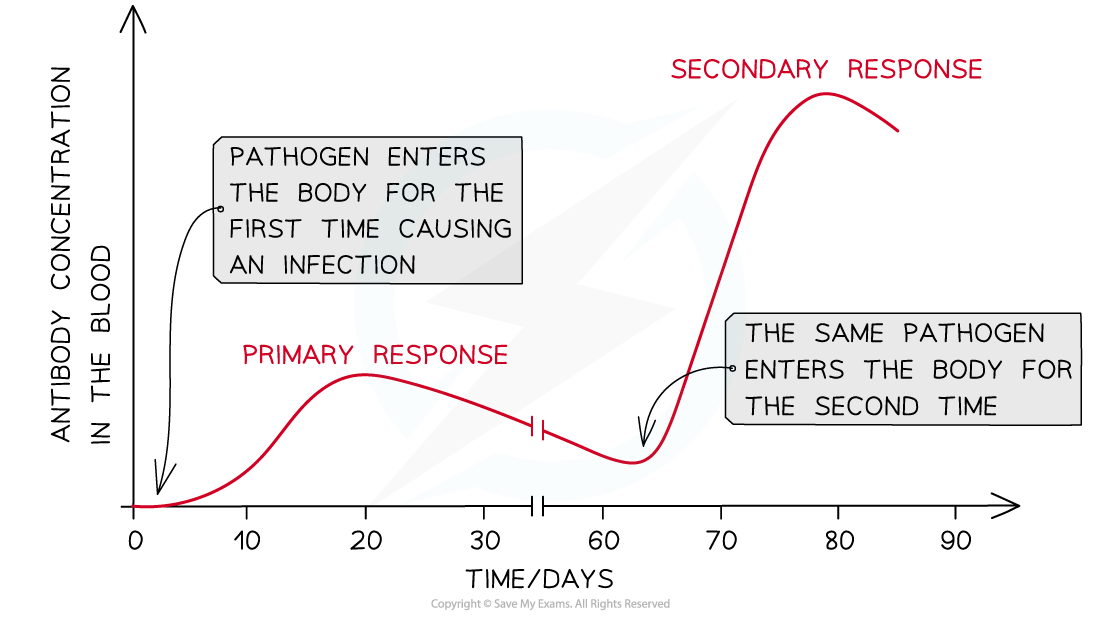- 翰林提供学术活动、国际课程、科研项目一站式留学背景提升服务!
- 400 888 0080
IB DP Biology: HL复习笔记6.3.3 White Blood Cells
White Blood Cells
- Phagocytes are white blood cells that are produced continuously in the bone marrow
- They are responsible for removing dead cells and invasive microorganisms; a non-specific immune response
- Phagocytes move to the site of infection and attach to pathogens
- The cell surface membrane of the phagocyte extends out and around the pathogen, engulfing it by endocytosis
- They then digest the pathogen using enzymes which are stored within lysosomes (in their cytoplasm)

Phagocytic cells ingest pathogens and digest them using enzymes
Antibody Production
- Pathogens possess protein molecules on their cell membranes called antigens
- When a lymphocyte is exposed to a specific foreign antigen, it will produce specific antibodies
- It is known as a specific immune response because one lymphocyte will respond to just one type of antigen
- Antibodies have two functional regions:
- A hypervariable functional region that binds to antigens on pathogens
- A functional region which aids the body in fighting the pathogen by labelling the pathogen (making it easier for phagocytes to find and engulf) and by preventing virus cells from binding to receptors on host cells (meaning they cannot enter the cell)
- When activated by a pathogen, lymphocytes clone themselves to produce plasma cells which are capable of mass antibody production
- Antibodies are only short-lived, degrading within weeks or months and the plasma cells that produced them are lost soon after
- However, inactive long-living memory cells are produced which remain in the blood for a long period of time to give immunity
- Memory cells allow for the rapid production of antibodies after secondary infection
- If the same pathogen infects for a second time, the inactive memory cells will become active and divide to produce plasma cells at a rapid rate
- These plasma cells are able to supply a large number of antibodies at a rapid rate to fight the pathogen before symptoms appear

Memory cells allow for the rapid production of antibodies
Effects of HIV on Antibody Production
- Human Immunodeficiency Virus is a retrovirus made up of several key components including RNA and the enzyme, reverse transcriptase, which is used to produce DNA in the host cell
- HIV infects the body and attacks a type of lymphocyte cell called a T-helper cell
- T-helper cells are a key component in the production of antibodies, so HIV inhibits the bodies capacity to produce antibodies
- In the early stages of infection, antibodies are produced to fight HIV, these can be detected in blood tests
- The individual is said to be HIV positive
The development of AIDS
- As the infection progresses, the ability to produce antibodies significantly reduces
- This renders the immune system unable to fight off other pathogens and so the individual becomes prone to infection from other opportunistic pathogens
- When the individual is suffering from several diseases or conditions at the same time, they are said to have acquired immune deficiency syndrome (AIDS)
- Progression of HIV, from the initial infection to the development of AIDS, can be slowed down using anti-retroviral drugs
- Due to highly successful drugs, many HIV positive individuals are able to live full-quality lives with normal life expectancies
Transmission of HIV
- HIV is unable to survive outside of the human body and so is mainly transmitted by the direct exchange of body fluids
- Viruses need host cells in order to replicate
- This means HIV can be transmitted in the following ways:
- Sexual intercourse
- Blood donation
- Sharing of needles used by intravenous drug users
- From mother to child across the placenta
- Mixing of blood between mother and child during birth
- From mother to child through breast milk
转载自savemyexams

早鸟钜惠!翰林2025暑期班课上线

最新发布
© 2025. All Rights Reserved. 沪ICP备2023009024号-1








